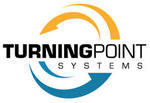What Is Food Service Distribution Software?
Software created especially for companies engaged in the purchase, storage, and delivery of food items is known as food service distribution software. It is an essential tool for businesses in the food service sector, including grocery stores, restaurants, and catering services. From ordering and inventory control to route planning and delivery tracking, this kind of software optimizes the entire supply chain process.
It makes it simpler for companies to run their operations effectively by combining multiple tasks, like purchasing, inventory control, sales, and invoicing, into a single centralized system. Automating manual chores is one of the main advantages of employing food service distribution software. Businesses may handle orders, plan deliveries, and keep track of inventory levels with this program.
In addition to saving time, it lowers the possibility of human error by doing away with the necessity for manual data entry. The capacity to increase overall efficiency and streamline processes is a key benefit of food service distribution software. Businesses may make well-informed decisions on pricing, delivery planning, and purchases with the use of real-time data and analytics.
Better inventory control, less waste, and better customer service are the results of this. Additionally, food service distribution software can help businesses better manage their inventory and avoid product shortages by providing capabilities like barcode scanning, automatic reorder points, and real-time tracking. Better client retention and satisfaction follow from this.
All things considered, each company operating in the food service sector should invest in food service distribution software. It can boost profitability, cut expenses, and optimize operations. This software enables firms to make data-driven decisions that can result in long-term success by automating manual activities and delivering real-time data and analytics.
What Are The Recent Trends In Food Service Distribution Software?
Due to shifting consumer preferences and new technical developments, the food service sector is always changing. Software for food service distribution has therefore been changing to keep up with the most recent developments and difficulties in the sector. We'll look more closely at some of the most recent developments in food service distribution software in this buyer's guide so you can make the best decision for your company.
1. Integration With Platforms for Online: Ordering and Delivery The food service business has been greatly impacted by the growth of online food delivery services and consumer demand for online food ordering. As a result, popular online ordering and delivery platforms may now be seamlessly integrated with food industry distribution software. This enables companies to track deliveries, manage inventory, and accept online orders with ease using a single, centralized system. This trend makes it simple for food service companies to address the rising demand for online ordering and delivery services while remaining competitive in the digital age.
2. A Stronger Emphasis On Food Traceability And Safety: As consumers grow increasingly aware of the provenance and handling of their food, food safety and traceability have emerged as major issues in the food service sector. The need for food service distribution software that can guarantee accurate food product tracking and tracing has therefore increased. Businesses can now maintain compliance with food safety rules and give customers piece of mind with capabilities like lot traceability, expiration date tracking, and recall management.
3. Scalability And Flexibility: With Cloud-Based Solutions Because of its scalability and flexibility, cloud-based software for food service distribution has been increasingly popular in recent years. Businesses may access their data and run their operations from any device at any time with cloud-based solutions. This provides a high degree of adaptability and ease, especially for companies with remote workers or different locations. Furthermore, cloud-based solutions are an affordable choice for long-term use because they can readily grow with your company.
4. Predictive Analytics And Artificial Intelligence: The application of artificial intelligence (AI) and predictive analytics is another new development in food service distribution software. Businesses can use AI to automate repetitive processes like route planning and inventory management, giving staff members more time to work on more important projects. Additionally, predictive analytics can offer insightful analysis and data-based suggestions for forecasting, inventory control, and strategic decision-making.
5. A Greater Priority For Sustainability: Many food service companies are now putting a lot of emphasis on sustainability, and the software sector has noticed. Food service distribution software now includes tools to monitor and cut down on packaging waste due to the growing popularity of sustainable and eco-friendly packaging solutions. In order to assist companies track and enhance their environmental effect and show stakeholders and consumers that they are committed to sustainability, several solutions additionally include sustainability reporting.
Benefits Of Using Food Service Distribution Software
A vital instrument for organizing and optimizing the food industry's distribution process is food service distribution software. A strong and effective system must be in place to guarantee accurate and timely product delivery in such a dynamic and fast-paced industry. Software for food service distribution is useful in this situation. However, what are the advantages of utilizing this software? Let's examine:
1. Enhanced Productivity And Efficiency: The increased productivity and efficiency that comes with adopting food service distribution software is one of its main benefits. The program reduces the likelihood of errors and delays by doing away with manual labor through features like inventory management, route optimization, and automated order processing. Better productivity and more efficient operations follow from this.
2. Improved Inventory Control: Managing a lot of perishable commodities is part of the distribution of food services, and any inventory management errors can result in big losses. Distribution software allows you to keep an eye on stock levels, track inventory in real-time, and set up automated reorder points so you never run out of product. In addition to preventing overstocking, this also lowers the likelihood of waste and enhances inventory control in general.
3. Precise Order Processing: Keeping positive client relations in a highly competitive market requires accurate and timely order delivery. With food service distribution software, you can reliably track orders throughout the entire process, create invoices, and enter orders rapidly. By reducing errors, order processing becomes quicker and more effective.
4. Financial Savings: You can save money in a number of ways with the correct distribution software. First off, by automating laborious operations, it lowers labor expenses. Additionally, it optimizes delivery routes, increasing the number of deliveries each trip while lowering fuel expenditures. Additionally, the software's precise inventory control reduces waste of perishable commodities, which saves money.
5. Improved Decision-Making: Comprehensive reporting and analytics on a range of topics, including sales, inventory, and delivery performance, are offered by distribution software. By anticipating demand, recognizing popular products, and optimizing routes, this data can help you make well-informed decisions. You may increase profitability by using these information to guide your business decisions.
Important Factors To Consider While Purchasing Food Service Distribution Software?
To make an informed choice, you need take into account a number of aspects while buying food service distribution software. Selecting the best software can have a significant impact on your company's productivity and performance. This software is made to help food industry distributors with ordering, inventory control, and delivery.
Let's examine some crucial considerations that you should make before investing in food service distribution software.
1. Scalability: Scalability is a crucial consideration when investing in food service distribution software. Software that can adjust and meet your evolving needs—like processing bigger orders and keeping more inventory is essential as your company expands. Verify that the software you select is scalable so it can handle your future expansion.
2. User-Friendly Interface: The program you select should have an intuitive user interface that is simple to use and comprehend. This will reduce the amount of time and money required for training and guarantee that your staff can pick it up quickly.
3. Customization: Each food service distribution company has distinct workflows and procedures. As a result, selecting software that can be tailored to your unique business requirements is crucial. Instead of modifying your procedures to accommodate the software, this will assist you in customizing the program to integrate easily with your current workflow.
4. Integration Capabilities: Your software for food service distribution should be able to interface with other applications and systems that you currently utilize, such your CRM and accounting software. This will remove the need for manual data entry and guarantee seamless data flow between systems.
5. Mobile Access: Having on-the-go access to critical information is essential in the fast-paced business world of today. Seek out mobile-friendly software that lets you handle orders, stock, and delivery from any location at any time.
6. Data Security: You deal with sensitive data as a food service distributor, including payment information and customer information. Verify that the program you select has strong security features in place to safeguard this data.
7. Customer Support: Since no software is flawless, you can occasionally need help or have inquiries concerning the program. This is where providing excellent customer service is important. Seek out a software supplier that provides dependable customer service with prompt response times and informed support agents. You can make sure you're investing in a solution that fits your unique business requirements and aids in efficient operation management by taking these elements into account when buying food service distribution software. Choose a program that will help your food service distribution business develop and succeed by carefully weighing your options before making a decision.
What Are The Key Features To Look For In Food Service Distribution Software?
The following crucial elements should be taken into account while looking for food service distribution software in order to guarantee successful and efficient management of your company's operations:
1. Inventory Management: To track and manage all of your food goods, ingredients, and supplies, look for software that provides full inventory management. To help avoid stockouts and spoiling, this should have capabilities like real-time tracking, product classification, expiration date tracking, and stock level notifications.
2. Order Management: From order creation to order fulfillment, an effective food service distribution software should offer order management features that expedite the entire order process. Features like customer order portals, multi-channel order management, and automated order processing should be part of this.
3. Route Planning And Optimization: To cut down on delivery times and expenses, companies that operate delivery services should seek out software that provides route planning and optimization. With the use of this function, you ought to be able to determine the most economical routes for your drivers and offer real-time tracking for more precise deliveries.
4. Warehouse Management: To guarantee a seamless flow of items into and out of the warehouse, the software should include features for warehouse management, such as picking and packing, put-away, and cross-docking. This will lessen human mistake and optimize inventory levels.
5. Reporting And Analytics: To gain insight into your company's performance, sales patterns, and inventory levels, food service distribution software must include a strong reporting and analytics capability. Seek out software that provides real-time data, dashboard customization, and the option to export reports in many formats for simple analysis.
6. Integration And Compatibility: To guarantee smooth data flow and reduce data entry errors, the software should be able to interact with other systems and applications, such as accounting and point-of-sale software. Additionally, it need to work with mobile devices, enabling remote management and access.
7. User-Friendly Interface: To guarantee simple adoption and effective software use, a user-friendly interface is essential. Choose software with a sleek, user-friendly interface that includes features like dashboard customization and drag-and-drop capabilities.
8. Customer Support: Finally, pick a software company that provides prompt, dependable customer service. Look for tools like tutorials, user manuals, and an experienced support staff to help with any potential operational or technical problems. You may choose the best food service distribution software for your company's requirements by taking into account these important factors.
Why Do Businesses Need Food Service Distribution Software?
To keep ahead in the fiercely competitive food sector, companies must continuously look for methods to increase productivity, save expenses, and streamline processes. Businesses can accomplish all of these objectives and more with the help of food service distribution software (FSDS), a potent instrument. Here's why FSDS is essential for your company:
1. Effective Inventory Management: Companies can effortlessly monitor and control inventory levels using FSDS, guaranteeing that goods are consistently available and lowering the possibility of overstocking or understocking. This reduces waste and helps prevent product shortages, which results in significant cost savings.
2. Simplified Ordering Procedure: FSDS enables companies to automate the ordering procedure, doing away with the necessity of placing orders by hand and lowering the possibility of mistakes. In addition to saving time and money, this guarantees that orders are dispatched precisely and on schedule.
3. Real-Time Tracking: Companies can use FSDS to monitor the flow of goods from the supplier to the client in real-time. Better supply chain insight makes it possible to make better decisions and respond more quickly to consumer requests.
4. Comprehensive Reporting And Analytics: FSDS offers companies thorough reports and analytics on customer, inventory, and sales data. This enables them to predict demand, spot trends, and streamline processes to promote expansion and financial success.
5. Safety And Compliance: FSDS includes capabilities like expiration date tracking, allergen information, and HACCP compliance to guarantee adherence to safety and regulatory requirements. This increases consumer trust and lowers the possibility of expensive fines.
6. Customization Of Orders: FSDS enables companies to alter orders in accordance with client preferences and unique demands. In addition to raising client happiness, this offers chances for cross-selling and upselling, which boosts sales.
How Much Time Is Required To Implement Food Service Distribution Software?
The size of your company, the complexity of your operations, and your current infrastructure can all affect how long it takes to adopt food service distribution software. A food service distribution software implementation can take two to six months on average. However, this timescale can be shortened with careful preparation and effective implementation.
Analyzing your business operations in-depth and identifying any gaps or places for improvement is the first step in putting food service distribution software into place. It may take many weeks to complete this study, but it is essential to comprehending your particular needs and choosing the best software for your company. The real implementation phase follows, which entails training your personnel on the new system's use, moving data, and configuring the program to match your business procedures.
Depending on the degree of customisation needed and the complexity of your business, this phase may take four to twelve weeks. To guarantee a seamless transfer to the new software during this time, a specialized project team of staff from various departments is necessary. Additionally, the vendor's support staff is essential in helping with the implementation process and educating your staff.
The last stage is to carry out comprehensive testing to make sure everything is operating as it should once the software has been configured and your team has received training. Depending on the size of the program, this phase may take a week or two.
What Is The Level Of Customization Available In Food Service Distribution Software?
To accommodate the various demands of the food service sector, food service distribution software provides a number of customization choices. These software solutions can be customized to meet the unique needs of a business thanks to their cutting-edge features and technology. Simplifying processes and increasing productivity are two of the main advantages of customizing food service distribution software.
Software can be tailored to a company's specific operations and procedures to assist cut down on manual errors and superfluous tasks. Integrating with current devices and systems is a crucial component of customization. This makes it possible for many platforms to communicate and share data easily, leading to accurate inventory management and real-time changes.
Additionally, software for food service distribution can be tailored to satisfy legal requirements, including those pertaining to traceability and food safety. These characteristics assist prevent any potential legal problems and guarantee that all operations adhere to industry standards. These software solutions frequently provide configurable reporting and analytics features in addition to functional customization.
Businesses may use this to monitor their performance and pinpoint areas for development, which improves decision-making and boosts profitability. It is important to keep in mind that different software providers may offer different levels of customisation.
Therefore, in order to best satisfy their business objectives, purchasers must carefully evaluate their needs and select a provider that offers a high degree of customization. All things considered, food service distribution software that offers a wide range of customization choices can be extremely helpful in increasing productivity, simplifying processes, and propelling company expansion.
Which Industries Can Benefit The Most From Food Service Distribution Software?
Businesses in the food and beverage sector can benefit greatly from the use of food service distribution software. It assists in streamlining procedures and cutting expenses related to order, delivery, and inventory management. Although a variety of companies can profit from food service distribution software, some are particularly well-positioned to take advantage of its features and potential.
1. Cafes And Restaurants: To run efficiently, cafes and restaurants need a steady supply of supplies and food. Software for food service distribution can assist in controlling inventory levels and guaranteeing that they always have the materials needed for their recipes on hand. In order to assist restaurants make better purchasing decisions and cut down on waste, it can also track sales and analyze data.
2. Resorts And Hotels: In-room meals, banquets, and room service are frequently provided by hotels and resorts; this necessitates the effective procurement and processing of food and supplies. They may ensure a flawless experience for their guests by managing their inventory and orders in real-time with food service distribution software. In order to increase their profit margins, they might also monitor food expenses and budgets.
3. Medical Facilities: Strict guidelines for food safety and nutrition apply to hospitals, assisted living centers, and other healthcare settings. By keeping track of allergens, lot numbers, and expiration dates, food industry distribution software can assist them in managing these requirements. Additionally, it can automate the ordering procedure and guarantee that residents and patients receive their meals on time.
4. Institutions Of Higher Learning: Every day, hundreds or thousands of students are fed by the large volume food service operations of schools and universities. In order to enhance the dining experience for students, food service distribution software can assist them in managing their menus, monitoring dietary requirements, and analyzing data. Additionally, it can handle student dining plan accounts and payments.
5. Catering Firms: Catering businesses manage big and frequently intricate orders for corporate parties, weddings, and other gatherings. They can handle their inventory, customer orders, and delivery logistics with the use of food service distribution software. It can also assist these organizations optimize their billing process with features like bespoke pricing and invoicing.
6. Food Merchants: Food service distribution software can help food businesses, including supermarkets and specialty food stores, manage their inventory levels, keep track of expiration dates, and automate replenishment orders. Additionally, it can assist in handling consumer orders and delivery, which makes it simpler to offer a seamless shopping experience.
Conclusion
To sum up, selecting the appropriate food service distribution software is essential to your company's success. It can boost productivity, simplify your procedures, and eventually boost your bottom line. It's crucial to do extensive research, weigh your options, and decide which features and capabilities best suit your unique business requirements before making a choice.
Additionally, to guarantee a successful and significant software deployment, consider elements like cost, customer service, and usability. In your quest for the ideal food service distribution software, we hope that this buyer's guide has offered insightful advice. I wish you luck as you work to create a successful and efficient food service distribution business.






















